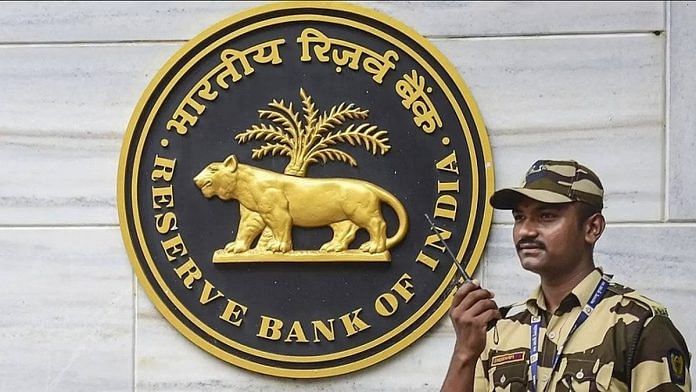
New Delhi: The Reserve Bank of India has raised concerns over the state of municipal finances in India, especially of urban municipalities, saying that they are becoming increasingly dependent on grants from state and central governments rather than relying on their own revenues.
This is to the detriment of these municipalities’ abilities to perform their functions effectively, the RBI said in its Report on Municipal Finances, released Thursday.
“ULBs (urban local bodies) in India are amongst the weakest globally in terms of fiscal autonomy with elaborate state government controls on their authority to levy taxes and user charges, setting of rates, granting of exemptions, and borrowing of funds as well as on the design, quantum and timing of inter-governmental transfers,” the report said.
“The absence of buoyant revenue handles, excessive reliance on grants from the central and state governments, and inability to autonomously access capital markets have weakened the ability of ULBs to fulfil their mandated functions,” it added.
The report went on to say that while the share of ULBs’ own revenues (those they can raise on their own from tax and non-tax sources) has been declining, the share of government transfers has been increasing — which indicates a growing fiscal dependency on such grants from higher levels of government.
“Empirical evidence has shown that greater dependency of local governments on upper tiers for meeting their expenditure needs makes them more vulnerable and less efficient,” the RBI added.
Also Read: No longer main source of funds for private sector, how banks’ role in the economy is changing
Data from 201 municipal corporations
Looking at the finances of 201 municipal corporations across the country, the RBI noted that there has been “no distinct rise in overall municipal revenue in India which remained broadly unchanged from 1946-47”.
Municipal revenues/ expenditures in India have stagnated at around 1 per cent of GDP for over a decade, the report said. In contrast, municipal revenues/ expenditures account for 7.4 per cent of GDP in Brazil and 6 per cent in South Africa.
“It has been stated that in order to improve the buoyancy of municipal revenue, the Centre and the states may share one-sixth of their GST revenue with the third tier,” the report said.
The weakness of urban municipalities’ own revenues has also meant that the services they provide have suffered, the RBI said.
“Overall, despite institutionalisation of the structure of local governance in India, there has been no appreciable improvement in the functioning of municipal corporations,” the report said. “The availability and quality of essential services for (the) urban population in India has consequently remained poor.”
However, the rapid rise in urban population density has meant that urban infrastructure needs to improve significantly, which would require a greater flow of financial resources to the local governments. This calls for innovative financing mechanisms, the RBI said.
Also Read: Indian banks are heading into a trap. High inflation and interest rates are a deadly mix
Alternative Sources of Financing
The RBI has said that there are several ways for municipalities to tap alternative sources of financing, including credit from banks, raising funds from the bond market, and pooled financing, where smaller ULBs’ access to the capital market can be enhanced through a common bond issued by pooling the resources of several local bodies.
“In the recent period, there has been a resurgence of municipal bond issuances in India, with nine MCs raising around Rs 3,840 crore during 2017-21,” the report adds. The nine corporations are: Ahmedabad, Andhra Pradesh Capital Region Development Authority, Bhopal, Ghaziabad, Greater Hyderabad, Indore, Lucknow, Pune, and Surat.
“Local governments can also tap the capital market by issuing municipal bonds,” the RBI suggested. “General obligation bonds issued by them are not secured by any asset but are backed by the issuer’s ‘full faith and credit’, with the power to tax residents to pay bondholders.”
“On the other hand, revenue bonds are backed by earnings/ accruals from a specific project such as highway tolls or lease fees,” it added. “A hybrid mechanism is also feasible whereby the general revenue of the MC (municipal corporation) is used as a backup to service the bond in case user charges are insufficient.”
In addition, the RBI said that Indian municipal corporations take a leaf from China’s book and create special purpose vehicles (SPVs) to raise funds.
“MCs can choose to finance through special purpose vehicles and state-pooled finance entities,” the report said. “For example, China’s Local Government Financing Vehicle (LGFV) is an investment company that sells bonds in the bond markets for financing real estate development and other local infrastructure projects.”
Whatever the solution chosen, the need for one is urgent, the RBI cautioned.
“As the demand for infrastructure grows among Indian cities, MCs must further explore ways to reinvigorate and foster alternative and sustainable resource mobilisation through municipal bonds,” the report said. “Policies to improve the environment for financial investment through sound and efficient regulation, greater transparency, and better governance can help nurture a vibrant municipal bond market.”
Listing municipal bonds in the stock exchanges could pave the way for developing the secondary market for municipal bonds in India — a much-needed development, the RBI added.
Also Read: Bank credit has bounced back, but rising interest rates & inflation can be new hurdles

COMMENTS